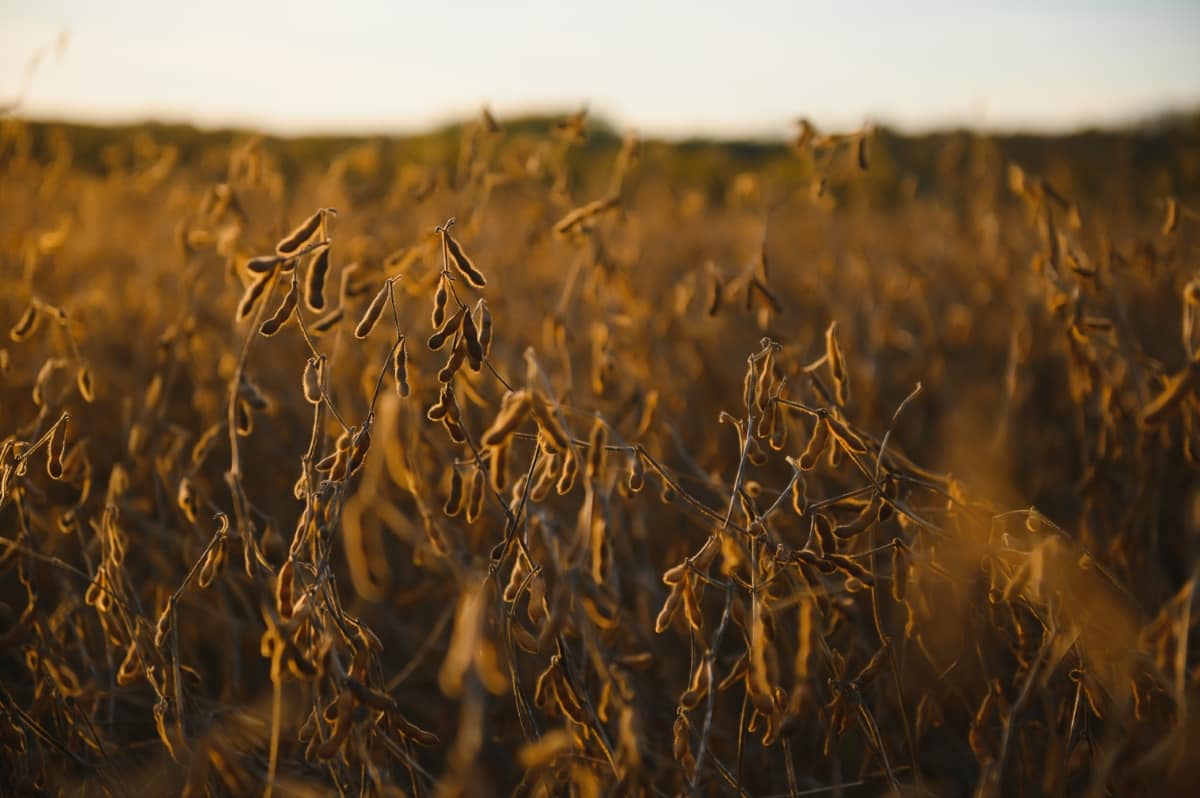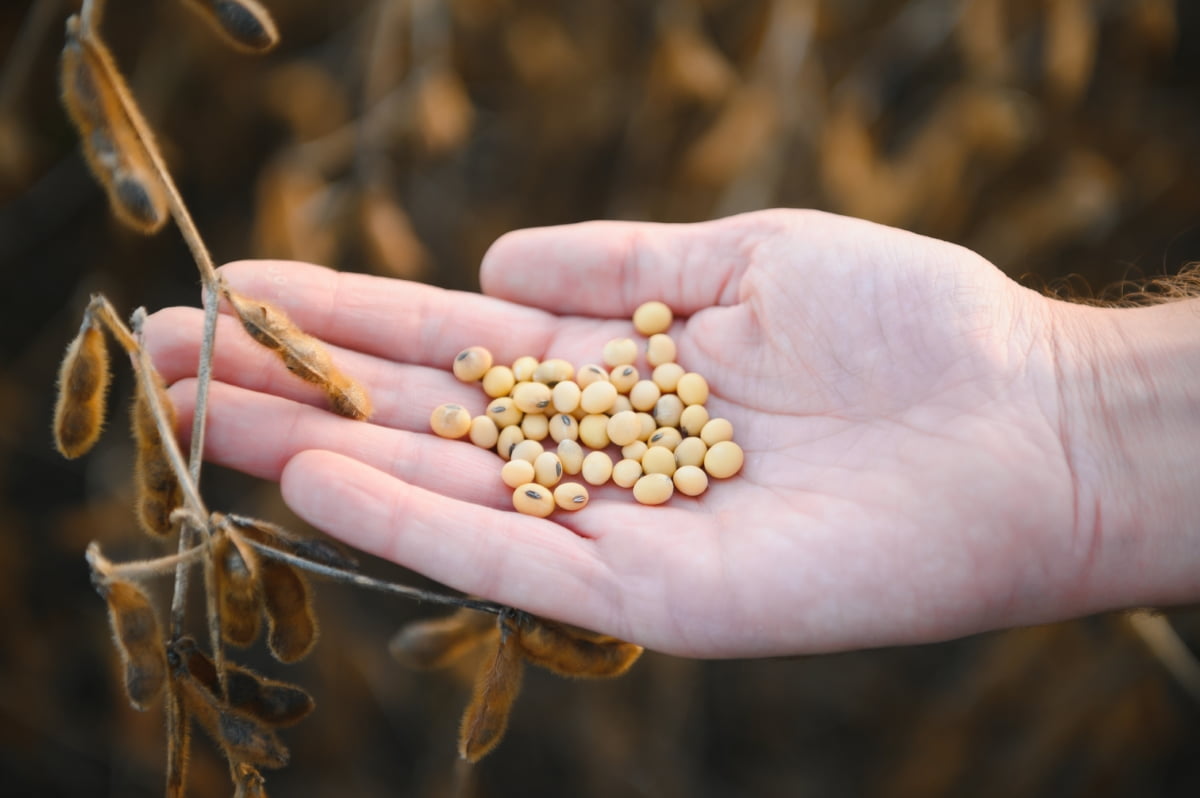Explore essential insights into identifying and managing sudden death syndrome (SDS) in soybeans. Learn about SDS-resistant soybean varieties, effective fungicide treatments, and soil management practices for prevention. Discover symptoms, diagnosis methods, and integrated disease management strategies to mitigate yield loss and economic impact. Implement advanced research findings and sustainable farming practices to reduce SDS risk and promote optimal soybean plant health.

Sudden Death Syndrome in Soybeans
Introduction to Sudden Death Syndrome in Soybeans
Sudden Death Syndrome (SDS) is a significant threat to soybean crops, causing economic losses and yield reduction. Effective identification and management of SDS are crucial for maintaining soybean productivity and profitability.
Overview of Sudden Death Syndrome (SDS) Impact on Soybean Crops
Sudden Death Syndrome (SDS) is a devastating fungal disease that affects soybean plants, leading to significant yield losses. The disease is caused by the fungus Fusarium virguliforme, which infects the roots of soybean plants, resulting in root rot and foliar symptoms. SDS caused yield reductions of up to 50% in severely affected fields, making it a major concern for soybean growers.
The Economic Importance of Managing SDS Effectively
The economic impact of SDS on soybean production is substantial, with estimated losses reaching millions of dollars annually. Effective management of SDS is crucial for minimizing economic losses and maintaining the sustainability of soybean farming.
Identifying Sudden Death Syndrome Symptoms
Early Detection: Recognizing SDS Symptoms in Soybean Plants
Early detection of SDS symptoms is essential for implementing timely management strategies. Symptoms of SDS typically appear during the reproductive stages of soybean plants and may include leaf wilting, stem and root rot, and leaf chlorosis. Recognizing these symptoms early can help growers take proactive measures to mitigate the disease’s impact.
Differentiating SDS from Other Soybean Diseases
Distinguishing SDS symptoms from those of other soybean diseases is critical for accurate diagnosis and targeted management. SDS can be differentiated from other diseases by specific foliar and root symptoms, such as leaf cupping, taproot rot, and the presence of blue fungal growth on roots. Understanding these distinct symptoms is essential for effective disease management.
Factors Contributing to SDS Outbreaks
Understanding Soil Conditions Favorable to SDS
SDS outbreaks are influenced by soil conditions that are conducive to the development and spread of the disease. High soil moisture, cool temperatures, and the presence of the SDS fungus in infested crop residue or soil contribute to the prevalence of the disease. Understanding these soil conditions is essential for implementing targeted management practices.
The Role of Crop Stress and Weather in SDS Development
Crop stress and environmental factors, such as cool and wet soil, can exacerbate SDS development in soybean fields. Additionally, the presence of soybean cyst nematode (SCN) and soil compaction can increase the severity of SDS outbreaks. Managing crop stress and optimizing environmental conditions are important considerations for SDS management.
In case you missed it: Turning Over a New Leaf: Fixing Yellowing Leaves on Peach Trees

Cultural Management Practices
Crop Rotation Strategies to Reduce SDS Risk
Implementing crop rotation practices, including a two-year rotation out of soybean production and the inclusion of non-host crops, can help reduce the severity of SDS. Avoiding early planting in fields known to be severely affected by SDS and maintaining good crop nutrition are also effective cultural management practices for mitigating the impact of the disease.
Improving Soil Drainage to Mitigate SDS Prevalence
Improving soil drainage in soybean fields is essential for mitigating the prevalence of SDS. Proper soil drainage helps reduce excess moisture, which can create favorable conditions for the development of the disease. Implementing soil drainage improvements is an important cultural practice for SDS management.
Seed Selection and Genetic Resistance
Choosing SDS-Resistant Soybean Varieties
Selecting soybean varieties with genetic resistance to SDS strategy for managing the disease. Resistant varieties can help minimize the impact of SDS on soybean crops and reduce yield losses. Working with seed companies to identify and select SDS-resistant varieties is essential for effective disease management.
The Importance of Seed Treatment in SDS Management
Seed treatment with fungicides, such as ILeVO, has shown positive yield responses in fields with significant amounts of SDS. Research continues to explore the effectiveness of seed treatments in managing SDS and reducing the disease’s impact on soybean crops. Incorporating seed treatment as part of an integrated management approach is important for SDS management.
Chemical and Biological Control Options
Fungicide Applications for SDS Management
Fungicide applications, when used judiciously, can contribute to the management of SDS in soybean fields. Research has shown that certain fungicides, such as ILeVO seed treatment, have demonstrated activity against SDS and have resulted in positive yield responses in affected fields. However, the cost-effectiveness of fungicide applications and their integration with other management practices should be carefully considered.
Exploring Biological Control Agents Against SDS
Biological control agents, such as beneficial microorganisms, offer potential solutions for managing SDS in soybean crops. Research and development in this area aim to identify and leverage biological control agents that can suppress the activity of the SDS fungus and reduce disease severity. Exploring the use of biological control agents as part of an integrated disease management approach holds promise for sustainable and environmentally friendly SDS management.
In case you missed it: Management of Philodendron Pests and Diseases: Effective Strategies for Control, Treatment and Prevention

Integrated Disease Management (IDM) Approach
Combining Practices for Comprehensive SDS Management
Integrated Disease Management (IDM) involves combining multiple management practices, including cultural, genetic, chemical, and biological control options, to manage SDS comprehensively. By integrating these practices, growers can effectively target different aspects of the disease and minimize its impact on soybean crops.
Monitoring and Thresholds for Timely Interventions
Regular monitoring of soybean fields for SDS symptoms and the establishment of threshold levels based on disease severity are essential for making timely management interventions. Implementing a proactive monitoring and intervention strategy enables growers to address SDS outbreaks promptly and minimize yield losses.
Advanced Research and Biotechnological Solutions
Biotechnological Advances in SDS Resistance
Ongoing research in biotechnology is focused on developing soybean varieties with enhanced resistance to SDS. Biotechnological advances, such as gene editing and genetic engineering, offer the potential to introduce specific resistance traits into soybean plants, providing durable protection against the SDS fungus.
Future Prospects: Gene Editing and Resistant Cultivars
The future of SDS management in soybeans may involve the development and deployment of gene-edited and resistant cultivars. By leveraging advanced biotechnological solutions, researchers aim to create soybean varieties with improved resistance to SDS, reducing the reliance on chemical treatments and enhancing the sustainability of SDS management.
In case you missed it: Ultimate Guide for Applying Acaricide Insecticides for Tick Control

Conclusion
Sudden Death Syndrome (SDS) in soybeans is a critical issue that requires effective management. Identifying symptoms, understanding outbreak factors, and implementing control options are crucial. Integrated disease management can mitigate SDS’s impact. Biotechnology advancements offer promising solutions for developing SDS-resistant varieties, ensuring sustainable and effective management. This proactive approach safeguards soybean crops and ensures long-term agricultural viability.
- Beneficial Insects in Pest Management
- Natural Solutions for Pest Control in Flower Gardens
- Types of Fungicides Used in Agriculture
- Common Issues in the Fruit Development Stage of Pomegranate Farming
- Fruit Development Issues in Papaya: Easy Solutions and Treatment
- Soil-Borne Diseases and How to Protect Your Plants
- Practices to Prevent Disease Spread in the Garden
- From Wilted to Thriving: How to Treat Root Rot Naturally in Houseplants
- Natural Remedies to Cure Brown Spots on Fig Tree Leaves